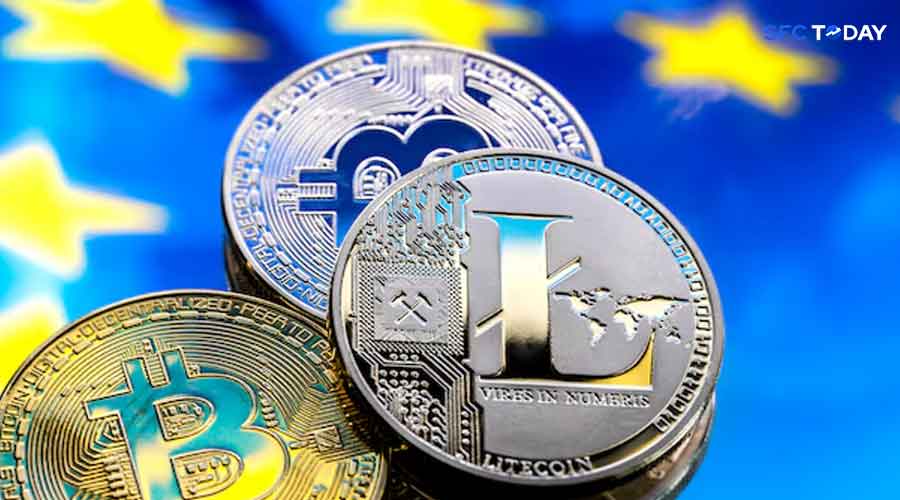The State of Crypto Regulation in the EU: Navigating the Future of Digital Assets
Introduction
The increase in cryptocurrencies has seen governments globally clamor for regulatory clarity, and the European Union is not left behind. Digital assets promise innovation and decentralization but pose risks such as fraud, money laundering, and market manipulation. The EU has made significant strides in developing a regulatory framework that ensures cryptocurrencies are used safely and responsibly. This paper addresses the current situation regarding crypto regulation within the EU, and focuses mainly on the most influential policies shaping the industry in its entirety now.
Crypto Regulation State in the EU
The European Union is working towards the development of a harmonized regulatory framework for cryptocurrencies. This will aim at finding a balance between encouraging innovation while protecting consumers and maintaining financial stability. There was much uncertainty both for businesses and investors due to the lack of a comprehensive regulatory environment in the past. However, recent efforts have brought well-rounded rules, such as the Markets in Crypto-Assets (MiCA) framework, to address those issues.
Also, with its other institutions, the European Commission has spurred the regulations that address matters of transparency, security, and accountability. The EU is well aware of the potential of blockchain but keen to find the way in reducing the risks due to the fast-growing nature of the market for the cryptocurrency. Markets in Crypto-Assets Framework
Markets in Crypto-Assets (MiCA) Framework
MiCA is the heart of the EU’s regulatory approach to digital assets. Launched in 2020, MiCA is intended to provide clear and uniform rules for the issuance, offering, and trading of crypto-assets within the European Economic Area (EEA). Its main aim is to protect consumers while ensuring legal certainty for businesses operating in the space.
Under MiCA, crypto-asset service providers undergo strict regulations; for instance, before offering their services, they are supposed to seek a nod from the relevant authorities. Thus, only reputable people can operate in the system of cryptocurrencies in the EU. Under MiCA, rules that curb market manipulation and insider trading are also provided within a fair and transparent crypto market.
This is one of the core focus areas of MiCA as stablecoins may well replace the regular financial system at some point in time. The framework already laid out a number of conditions to be satisfied by the stablecoin issuers in order for protection of value to be available. So, in this case, MiCA will be refined even more as the global crypto regulatory model, which will then be adopted by other regions and they will get their copy.
AMLs and KYCs
The AMLs and KYCs procedures are among the significant components of the regulatory framework of the EU. Due to their anonymous nature, cryptocurrency transactions are abused for money laundering as well as financing terror activities among other illegal activity. The EU has strong AML statutes, which are heavily adopted in such a way that all crypto-asset service providers have to comply.
Under these rules, CASPs are supposed to perform KYC on the customers effectively so that they authenticate only permissible identities. This helps prevent cryptocurrencies from being used for any sort of illegal purposes and brings in more transparency in the digital asset market. One of the first steps taken by the European Union in extending the scope of AML regulations into the cryptocurrency sphere was the Fifth Anti-Money Laundering Directive, or 5AMLD. It would make it compulsory for the crypto exchanges and wallet providers to register with the national regulators and follow KYC requirements.
Future AML frameworks will also make things more stringent with DeFi platforms and unhosted wallets. It will, therefore, ensure monitoring of every single corner in the crypto space.
Impact of Crypto Regulation on Blockchain Innovation
Although the EU regulation environment is meant to purportedly ensure protection of the consumer from fraud and other malpractices concerning the financial aspects, it has an immense effect on innovation. Too much regulation means a growth killer where excessive rules overburden the hands of start-ups and small-scale crypto projects, thereby hiking costs in the name of compliance by piling together legal and operational expenses against any new market players.
On the other hand, the clearer regulations will just be what gives the businesses the security needed to operate and expand in an organized environment. The EU crypto-related regulations pending to be incorporated with MiCA will bring level playing grounds of innovation but diminish risks. It is most likely that a stable regulatory environment will evoke healthy growth in various sectors, starting with finance and supply chain systems followed closely by health technologies.
Challenges in Harmonizing Regulations Across the EU
The biggest challenge for the EU is in the harmonization of crypto regulations across member states. In that respect, MiCA stands more as a broad framework, but approaches can vary and the manner in which it is enforced can also differ in every country to this point, thus leading to inconsistent interpretation and application.
Fast-evolving cryptocurrency market. This makes it hard for the regulators to keep up with the fast growth. The constant appearance of new products, like DAOs and NFTs, poses challenges that regulations do not seem to address all the time. As time passes and the crypto space evolves, so will the need for the EU to adapt the regulatory framework into one that would be relevant and effective.
Conclusion
This, however, reflects how digital assets have become more critical in the world’s economy, and through its frameworks, like MiCA, and its strong AML requirements, the EU is creating an environment where adoption of cryptocurrency becomes safe and transparent. There will be great challenges, from the harmonization of regulations from the member states to the need to adapt innovations. However, the EU will provide the greatest regulatory efforts needed for a much more secure and thriving crypto market. Businesses as well as their consumers can foresee more clarity and security with much trust in their future digital assets within the European Union.







